
Tech Diva Biz Talks
Ready to mix business with brains, tech, and just the right amount of side-eye? Then welcome to Tech Diva Biz Talks (formerly the Business Chop), the podcast where strategy slays, tech behaves (mostly), and your host, Audrey “Tech Diva” Wiggins, says what everyone else is thinking about marketing and entrepreneurship.
We’re spilling the tea on business blunders, brand glow-ups, digital do-overs, and how to stop ghosting your website. Interviews? Sometimes. Sass? Always. Tech working better for your business? That’s the goal.
Subscribe now to catch every episode and exclusive content.
Want to be a guest on Tech Diva Biz Talks? Send Audrey Wiggins a message on PodMatch, here: https://www.podmatch.com/hostdetailpreview/audreywiggins
#LetsTalkTech #Entrepreneurship #PublishedAndPaid #Authorpreneur #Storytelling #EntrepreneurLife #MarketingMoves #SuccessBlueprint #StartupHacks #KeepItLegal #ScaleYourBusiness #TechForBiz #SmartMoney #BrandingBoss #Innovation #HustleSmart #Mindset #DigitalMarketing #ExitStrategies #SuccessionPlanning #VisualStorytelling #TeamWork
The Tech Diva Biz Talks podcast is a production of Altogether Marketing LLC founded by Audrey Wiggins, Chief Brand Strategist aka Tech Diva. Visit https://altogether.biz for more information.
Tech Diva Biz Talks
Why Brain Safety Matters When Leading Organizational Shifts with Laura Boone
Change can be daunting, especially in the fast-paced world of business and technology. In this episode of Tech Diva Biz Talks, I sit down with Laura Boone, CEO of Structured Shifts and self-proclaimed "Chief Change Cheerleader." Laura brings a fresh perspective on navigating organizational transformations, focusing on the often-overlooked human element of change.
Bridging the Gap Between Strategy and Human Behavior. Laura reveals her unique approach to change management, emphasizing the importance of:
- Understanding the brain's response to change
- Recognizing the predictable patterns of group and individual change
- Creating a safe environment for transformation
Learn why this approach may be the key to unlocking sustainable transformation in your organization.
Laura offers actionable advice for leaders feeling overwhelmed by change initiatives:
- The importance of self-care and avoiding burnout
- Tailoring support to different types of adopters within your team
- Leveraging brain science and simple tools to drive meaningful change
Whether you're a tech entrepreneur, a seasoned executive, or a team leader facing significant transitions, this episode provides valuable insights on making change stick while keeping the human element at the forefront.
Ready to revolutionize your approach to organizational change? Visit structuredshifts.com to access Laura's resources and learn how to lead with the bra
Buzzsprout - Let's get your podcast launched!Start for FREE
Digital Marketing Platform
Content Creator Machine - The integrated all-in-one online marketing, business tool/platform.
Digital Business Cards
Let's speed up your follow up. Get a digital business card.
Altogether Domains, Hosting and More
Bringing your business online - domain names, web design, branded email, security, hosting and more.
Small Business Legal Services
Your Small Business Legal Plan can help with any business legal matter.
Mens and Womens Hats
Since 1972, American Hat Makers has been dedicated to the art of fine hat making.
Looking for Podcast Guests?
Keep your podcast schedule full with quality guests from PodMatch.
Designrr for eBooks, Blogs
Create eBooks, Blogs, Lead Magnets and more!
Riverside.fm Your Own Virtual Studio
Professional Virtual Studio
Disclaimer: This post contains affiliate links. If you make a purchase, I may receive a commission at no extra cost to you.
Want to be a guest on Tech Diva Biz Talks? Send Audrey Wiggins a message on PodMatch, here: podmatch.com/hostdetailpreview/audreywiggins
To work with Audrey schedule a breakthrough/discovery session.
[00:00:00 - 00:01:31]
Welcome to Tech Diva Biz Talks, where we tune in, dive deep and level up. I'm your host, Audrey Wiggins, AKA the Tech Diva, brand strategist, marketing mind, and your guide through the ups and downs of entrepreneurship. Let's talk tech. Hello everyone, and welcome to Tech Diva Biz Talks. We're diving into the heart of transformation with none other than Laura Boone and she is the CEO of Structured Shifts and your go to chief change cheerleader. We can all use a cheerleader. Oh my goodness. For sure. All right, so Laura is a sought after speaker, leadership and change expert and executive coach who helps organizations, leaders and teams navigate the human side of business during times of change. Her mission, to bridge the gap between bold strategy and real human behavior, creating not just short term wins, but sustainable transformation that sticks. So whether your team stuck in resistance or you're personally navigating a major shift, Laura brings a rare mix of clarity, empathy and action that will inspire you to lead with more purpose, resilience and confidence. So let's talk tech change and leading like a human. Because what transformation doesn't have to be painful, it just needs the right shift. So welcome to Tech Diva Biz Talks.
[00:01:31 - 00:01:35]
Laura, thank you. Very happy to be here. And what an introduction, huh?
[00:01:36 - 00:01:50]
Yes, yes, indeed. Oh, gosh. So before we, we lead off into that proverbial commercial, you know, we have to have one of those you want to share with the Tech Divination, a couple, you know, one or two personal fun facts about you.
[00:01:51 - 00:02:39]
Oh, my goodness. I think the funnest fun fact is that it's hard to answer the fun fact question. Right. Because you always, you never know which way to go with it. And you know, sometimes they could do exactly go way too deep, way too far in the wrong direction. But I think the one is that if you sit next to me in a meeting, we're almost guaranteed to get in trouble because I will laugh at the wrong time. 100 guaranteed. And also though, if you get warm, I almost always have a fan with me. So. And if I, if you see me with my fan, I have an extra, so I always bring a fan for a friend. So we are always moderately temperate. We have a moderate temperature control and we're going to have a good time and a good laugh while we're going through any experience together. So I like that.
[00:02:39 - 00:02:42]
Yes. Bring your own climate change. Why don't you bring.
[00:02:42 - 00:02:43]
Exactly.
[00:02:45 - 00:03:29]
Yeah. Oh, gosh, that's so cool. All right, so Tech Divination and Laura, we're going to be right back on the other side of this message to get into some juicy questions. Knock out your competition with all together marketing. We elevate your brand. Take a stance with your business name, logo, the tagline, your colors, even the fonts for your business. And then jab left with your website. Jab right with core values. Back up with product experience and bring it on with you. Visit all together that biz and let us help you create a knockout brand. Welcome back, everyone. And Laura, are you ready to talk tech?
[00:03:30 - 00:03:34]
I have never been more ready. I am so excited and I'm thrilled that we're getting to spend this time together today.
[00:03:34 - 00:03:46]
Awesome. Okay, first up, Chief Change Cheerleader. What inspired that title and, you know, how does that reflect your approach to leading transformation?
[00:03:46 - 00:03:57]
Well, I think a few things. First of all, it alliterates beautifully, and it's kind of hard to say, right? So it's even fun to try to say it. Chief Change Cheerleader. Try to say that five times fast. Right?
[00:03:57 - 00:03:57]
Right.
[00:03:57 - 00:06:02]
Distracts from the, you know, heaviness of the whole experience, but that's really what it is, right? Change feels heavy. And calling oneself even tongue in cheek, a Chief Change Change Cheerleader helps us remember that it's not just about strategy, structures, and support, right? That it's about having fun along the way. And I know that sounds silly perhaps to some when we're looking at such a serious thing, but again, we're talking about the human side of change. And part of the human side of change is to enjoy the ride the whole way we go, right? And we're talking about when I work with people, there are. I always like to remind everybody that there are what at least I consider four types of change, right? We have change we want. That's the change we invite into our life, into our world, the things that we really look forward to. And, you know, maybe you think you don't need a cheerleader along the way, but, you know, there's still those times when we dip a little bit. There's a change we don't want, right? The change we would in no way invite into our lives even, you know, if you gave me a puppy and a million dollars. And then we've got the change that's around us. You know, for a lot of us, it's AI right now, right? That's the change that's environmental. It's around us. It's an opportunity or a challenge or a problem, depending on how we decide to look at it. And then even more importantly, there's the change we don't make. The Change, we don't choose. Right. And so as a cheerleader, you know, again, if I'm your hype square squad or if I'm the one and my team are the ones supporting you through any of those four types of change, we're able to provide you the structures, the strategies, the supports that we need in order to make effective change, not only in the immediate, but make it sustainable. Right. And make it something that doesn't totally drain us along the way. So we come out the other end still us intact and probably even better than when we started. So, yeah. So we're cheerleader.
[00:06:03 - 00:06:17]
All right, then. Okay, so structure shift focuses on bridging strategy and human behavior. So what's one common disconnect that you see between the two? And how do you help leaders close that gap?
[00:06:17 - 00:08:49]
Yeah, and it is the. This is really key. And this is where most of this sits, in my opinion. When we are looking at change, we have the people side and we have the process side. 99% of us are great at the process side. Right. It's the strategy, it's the structures, it's all of that. What we often forget is the human side isn't following the same journey that the structure side is. Because strategy assumes logic, right? When we're making these changes, processes, when we're coming up with the plan, when we're writing the change documents, that's strategy. That assumes that people are going to respond logically to the changes that we put into place. We say you're going to do X. We assume if we give everybody the right amount of information, they will do Y. We know time and time again Y often becomes Z. Right? We zig when we should zag. And that's because behavior is following safety. Now I talk about, you know, I call it brain Safe, the brain Safe method. And it talks about the idea that every single one of us is driven by the brain, the organ inside our heads. Right. The central nervous system is looking for four things. Security, alignment, familiarity and empowerment. And change challenges, all of those things. And so when we come in and offer a change initiative, if we're providing all the information, all of the tools, all of the structures, we feel like that's enough. But the reality is, if we don't bring in, how do we make people feel safe, safe using the acronym not physical, not just physical safety, but how, if we don't make them feel secure line, familiar and empowered along the line? We could talk about that for days. And I would, because I love it so much. If we don't do that the. We see resistance, we see quiet quitting, we see compliance without collaboration. Right. We see all the things that we then perhaps as leaders see as, and I'm air quoting like bad behaviors, things that they don't want to see. And you know, all that drama becomes the challenge instead of the data we use to inform the decisions that we're making. So, you know, that's why one of the things that I teach first is teaching leaders to meet the brain before the goal. Right. How do we help people to feel safe, safe in the change process? Because, you know, we hear, we know the stats on change initiatives. Very few of them succeed in the way we start out at the beginning. And most of it is because we're looking at strategy over human behavior.
[00:08:49 - 00:09:08]
So you're talking about being human, you know, being human in times of change. And a lot of from the tech divination would be like marketers, business owners, how does that really fit in that? And why sometimes we do we overlook that, that human factor doing times of big transformations or transitions as to say.
[00:09:08 - 00:11:25]
I mean, there's a couple of reasons and one is again, process over people. I'm not saying that's the way we should do. I'm saying the way. That's the way it tends to happen. Because process feels safe to us. I can navigate a process. I can create a process. I can create a. Exactly. And it does exactly what I say. So it feels super safe to me to create a process and to put this out there in the world. I can't control what a person does. And so my tendency towards safety, brain safety, you know, being understanding safety in the process, as I as a leader am going through it, is to lean in where I'm comfortable. And so we create processes. We create these constantly. You see them all the time. Enormous change initiative, documentation, documents and processes, workflows in it. How often do we create a workflow that we 100% know works and then nobody uses it? What we really want to do is. And what's beneficial is to really look at the people first. And it sometimes takes a little bit longer, right? It takes an extra meeting, an extra minute. Because what we do right now is we often prioritize speed over the safety needs of the people who are experiencing the change. Additionally, we're professionals and we don't do feelings in the workplace. I always talk about drama is data and feelings need frameworks. So if we're ignoring or if we're choosing to not acknowledge the feelings that are going on, we're missing out on A lot of data and a lot of opportunity to create successful frameworks that are going to lead us to long term success. Because at the end of the day, I mean, if you look at the change management models, change is personal, even when it's organizational. Every single person in the change process is experiencing change through their own journey, through their own lens. Whether you're the cto, whether you're, you know, no matter who you are, you're experiencing changes in individual, human. And the greatest thing about that is one of the models that I teach, it shows how to understand the predictable nature of group change and then how to address the individual within that experience in a way that as a leader, you're not burning yourself out and you're recognizing that you're, you're part of change. You're human too. Humans. It's not ignoring the human piece, it's not distracting you. It's strong strategy to put the people first.
[00:11:25 - 00:11:37]
I want to get a story going here. So tell us about a moment when a client experienced a breakthrough, real shift that changed not just their business, but how they show up as a leader.
[00:11:37 - 00:15:35]
Just because this was such an enormous shift for me and this was easily. What I'm going to do is share a story of a client, actually me and the journey that I have, because I have seen this exact thing play out with so many other people as well. It was about 15 years ago and it was my first big change initiative. I was managing a tech integration project for, for a organization out back when I lived in Ohio actually. And I was positive that I had this nailed. I had every single process in place, I had the communication strategy down pat. And every week I went into the update meeting with every single thing you could possibly know and every possible question pre answered. And every single time, one person, a lovely, lovely employee who is a veteran, she'd been there for a hundred years, she would eat me alive every single time. I'm young, I'm excited. Excited. And so she would have a question I couldn't answer, she would have an objection that wasn't, that wasn't, wasn't ready in my mind. I would go back to my office, I would work harder. I am not the only one that's done this. I would adjust my communication strategy, I would adjust my schedule. I would work deep into the night to make sure that I had everything communicated well. And this cycle repeated for months until the point where I was like getting hives going into the meeting. One day she comes into my office after the meeting and she literally walks in and I could tell this I 100 times. And every time people are like, yep, I got one just like her. She comes into my office, closes the door, sits down and she says to me, little girl, I know your job is to make this change happen, but what I'm going to tell you is it is going to happen in my office over my dead body. Oh, and I kid you not, she beautifully got up with the most more dignity than I've ever seen in my life, walks out of my office, closes the door gently and just leaves me there like, okay, what am I going to do? And so the reason I tell this as the most inspiring story that I've ever experienced or heard is because what I did, and it could have been in a movie, I looked up like, oh my gosh, what am I going to do? And on the wall I had a sign that said, the only person that likes change is a baby with a wet diaper. Right? It's Mark Twain that said this. It had been on the wall in my office for a year. I had purposely put it there and yet I hadn't been paying attention to it. Right next to it, underneath it actually was a copy of the Rogers Diffusions of innovation curve. And this is a change curve. That is the predictable path that groups experience as they navigate a change. I had been ignoring the two most important things that I needed to know. First, people don't like change unless you're a baby with a wet diaper. And second, there is a predictable process that you are going to see any organization go through as they're navigating change. And the biggest component to recognize is that each group is comprised of individuals. And how you navigate the individual change is how the is what leads to or defines if the group change is going to be a success. So that change, to get to the point of all of this, that change just landed so hard for me in that moment that if they put it in a movie, it would be like the sweeping music in the background where you know, you're like, whoa. Because it really landed hard for me. So what I did then was really looked at. Okay, who is this person? I'm going to call her Mary. Who is Mary? Where is she on the change curve? What do I need to do to support her? And how do we make sure that we're including the humans in the process? Because Mary, she could have and was very successfully taking my change initiative down. She could have blown it up. She's a 30 year veteran employee, like I'm new, coming in telling People, things are going to change. It could have gone very badly. I invited Mary in to be a consultant on the project. Bring her in. Canary in the coal mine. And that was one example of how recognizing the human in the change is what led to successful implementation adoption. And I could have sent a million emails, Audrey, and they would have never been read, but man, right.
[00:15:35 - 00:15:37]
So making your enemy your friend.
[00:15:37 - 00:16:12]
Absolutely. And the lesson that came to that for me through that experience, through all of it has changed the way I've done business for 15 years now. And, and I take that Mary's story, that attitude that everything into every change that I support organizations make. And we see it every single time when we bring the humans in, when we recognize that change happens in a predictable pattern for groups, that individuals navigate change in their own way. And when we adopt, adopt processes that recognize their needs every single time we have success, every time we don't, we don't have the success that we seek guaranteed.
[00:16:12 - 00:16:33]
So that really outlines for us that change can be also exhausting. And it's going back. And it's not about people pleasing, it's about, okay, so how can we include everybody in this process so they're. They're comfortable getting out of their, getting out of their comfort zone. They're comfortable. Uncomfortable, so to speak. Yeah, yeah, yeah. That was a great answer.
[00:16:33 - 00:16:36]
I love that. Being comfortable, being uncomfortable.
[00:16:36 - 00:17:45]
Yes, yes. Really appreciate that. Because we do as business owners or even employees, we're giving edicts. You know, change comes even if it's like you said, the ITC stuff, like things change. And I've been in organizations whereas society was changing or the business, the way businesses operated change. When the first we had the word processors, then you had the big mass 11 computer systems that came in and all of that was exciting, but there was a lot of work behind that. So you always would have your eager beavers. You know, I was one of those, always ready except excited for what's coming next. And, and it was just interesting as I look backwards over the years, how things have shifted in areas of technology and, but bringing that like, again, we're talking about that human factor and bringing that, that human side to this. As your structure shifts, okay. To bring the name of your, your business into the conversation. I think that people, we really need to, to think about that and think about also. So there's the change agents and then there's agents of change. It's like walking. It's like, yeah, I want to learn how to walk, but you know, but I don't want to fall.
[00:17:45 - 00:17:55]
I don't want to fall. Don't let me fall. Yes. Which is why we have structured supports that go into the process. We don't just let kiddos like walk off of a. Whatever.
[00:17:57 - 00:17:59]
Right, right. Oh, my goodness.
[00:17:59 - 00:20:03]
When you were talking about navigating change and you were an early adopter, you were diving into, you're ready to make change. And we see that as such a good thing. And it is, except for the early adopters of people are coming in with these great ideas. They're the one, they're the disruptors. Right. They're coming in and disrupting an already established position or system. And ships don't turn as quickly as boats do. And so there are different ways. And one of the things that I talk about that I really enjoy sharing is the different ways that we help people in each state of the natural change progression. You got the Rogers adoption curve. You've got your early adopter, you've got your innovators, your early adopters, your late adopters and your laggards. Each of them benefit from, from being navigated. I'm going to say managed, and I wouldn't use that word, but being managed in a different way. And it's really the biggest challenge I think that I see leaders face is that they try to reach everybody the same way. I have to meet with every single member of my team to talk about this change and I'm exhausted. I can't do it. Well, here's the reality. No, you don't. Not everybody needs that or wants it. You've got your early adopters, you've got your laggards. Those are the people, they're the outliers. If you look at any standardized bell curve, they're the laggards, they're the one. And the early adopters, they're the ones, the individual support more than anybody else. The ones in the middle, your early adopters and your late adopters, they typically need information, they need the resources, they need access. And they might need a little bit of support. But if you're going to try to give one to one support in the way that you think everybody needs and decide for them as a leader, you can't do that. You can't scale yourself to that degree and you're going to burn yourself out. And if you burn yourself out as a leader, you're no good to anybody. And that's a whole conversation that in itself. When I have that, I see so many leaders let themselves off the hook. They're finally like, oh my gosh, I never thought of it that way. And thank goodness because I'm killing myself over here trying to help everybody. And we take a step back and we look at the team. Who on your team, what stage are they in? Okay, what kind of support does that person need? You probably don't need to meet one to one with Susan. Like Susan's in, she's bought in. She just needs a little bit of information on how to use the new form. She's not arguing with you about it and she doesn't even want to meet with you.
[00:20:05 - 00:20:08]
Give me, just let me go and do my thing, do my job.
[00:20:09 - 00:20:09]
Exactly.
[00:20:10 - 00:20:12]
I'll come to you if I have a question.
[00:20:12 - 00:20:31]
Exactly right. And you know, you're chasing this one person to do a one to one who doesn't want it. And so the energy that we as leaders put into serving in the way that we think people need to be, you know, need to be supported. When they don't, it happens. The heart is always in the right place.
[00:20:31 - 00:20:45]
Well, this has been a fantastic conversation today. So there is someone listening today and they're struggling with change and admitting just being stuck and unsure of their next step. So what's the very first thing that you suggest that they do?
[00:20:45 - 00:22:28]
First thing I suggest that they do is breathe. That sounds silly and it is also true. It is also the 100 truth. The first thing we want to do is just take a breath because we tighten up, we get so and as a result, and I don't think I've sent you one yet, Audrey, I haven't sent you a frog but we're going to get to you frog. These little frogs, I give them out everywhere. I've got thousands and thousands of them out and you can see there's one here. But the idea of boiling the frog is something that you don't want to do. Don't want to let things bubble, bubble, bubble, toil and trouble underneath where then it becomes boom. You know, all of a sudden we have health issues. We have all sorts of things that are going on because we didn't take the moment just to breathe and know everything would be okay. That's the first thing. The second is to recognize that again change happens in a very predictable way. If we understand that change, the change process is going to, it's going to navigate, it's, we're going to navigate it in a very specific way. And you're not going to change that under any circumstances because that's human nature. Except for you can inform it and you can move through it either with control because you understand it or you can just let it drive you. I prefer the first way where we do it in an informed way. And then third is to really honestly. I have a white paper, it's called Leading with the Brain in Mind. And so it's how do you navigate change from a brain based perspective? And I'm more than happy to send it to anyone. You know, just have them contact you through your. Not your normal process. And we will get that to them because it's a white paper that explains exactly what's going on in the brain. It explains a change process at the group and individual level and then gives them action steps that they can take in order to support themselves and as well as their teams as they're navigating any kind of change experience.
[00:22:28 - 00:22:35]
Awesome. So Laura, how can we get in touch with you and work with you? What's your website or how can we get connected?
[00:22:35 - 00:23:23]
Yeah, my website is structured shifts dot com. So the word structured the word shifts as in changes dot com. So there's that, there's a. Let's connect resource and link on there. There's some informative videos that talk about a couple of the tools, the primary tools that we use. One is called the tels, the other is a strategic domains assessment. And those are two really vital tools that you could read it, implement them today and make some, some really positive moves forward in a great direction that you're already going. And then the second is to literally just email me lauratrucuredchips.com and I am here to chat consulting. I go into organizations and do training. I speak at events on this very thing every single day. It's my life, my love. It's what I do. Yeah.
[00:23:23 - 00:23:35]
Awesome. All right. N you we've got your little marching orders there. So definitely get in touch with Lori, hit her website and, and grab some of those, those resources that she has. Send her an email so she can send you that, that white paper.
[00:23:35 - 00:23:36]
And a frog.
[00:23:36 - 00:23:49]
Yeah. Oh, and a frog. One froggy over there. Well, Laura, if that's it, we're gonna wrap this up. Is there a piece of wisdom? There's there a nugget you want to send us home with so that you just want to lay.
[00:23:51 - 00:23:59]
Land in the plane with? Honestly, I believe that a little bit of brain science, a little bit of strategy and a lot of sticky notes can change the world.
[00:23:59 - 00:24:03]
Awesome. Well, that's it then. Thank you so much and we look forward to reconnecting with you soon.
[00:24:03 - 00:24:05]
Thanks. Take care.
[00:24:05 - 00:24:18]
That's it for today's. Tech Diva Biz Talks. Hope you caught a gem or two. If you did, share it, review it, and most of all, put it into action. Until next time, tune in, level up and talk tech.
Podcasts we love
Check out these other fine podcasts recommended by us, not an algorithm.

Podcasting Made Simple
Alex Sanfilippo, PodMatch.com
It's Not Just Talking with Vince Quinn
SBX Productions, Vince Quinn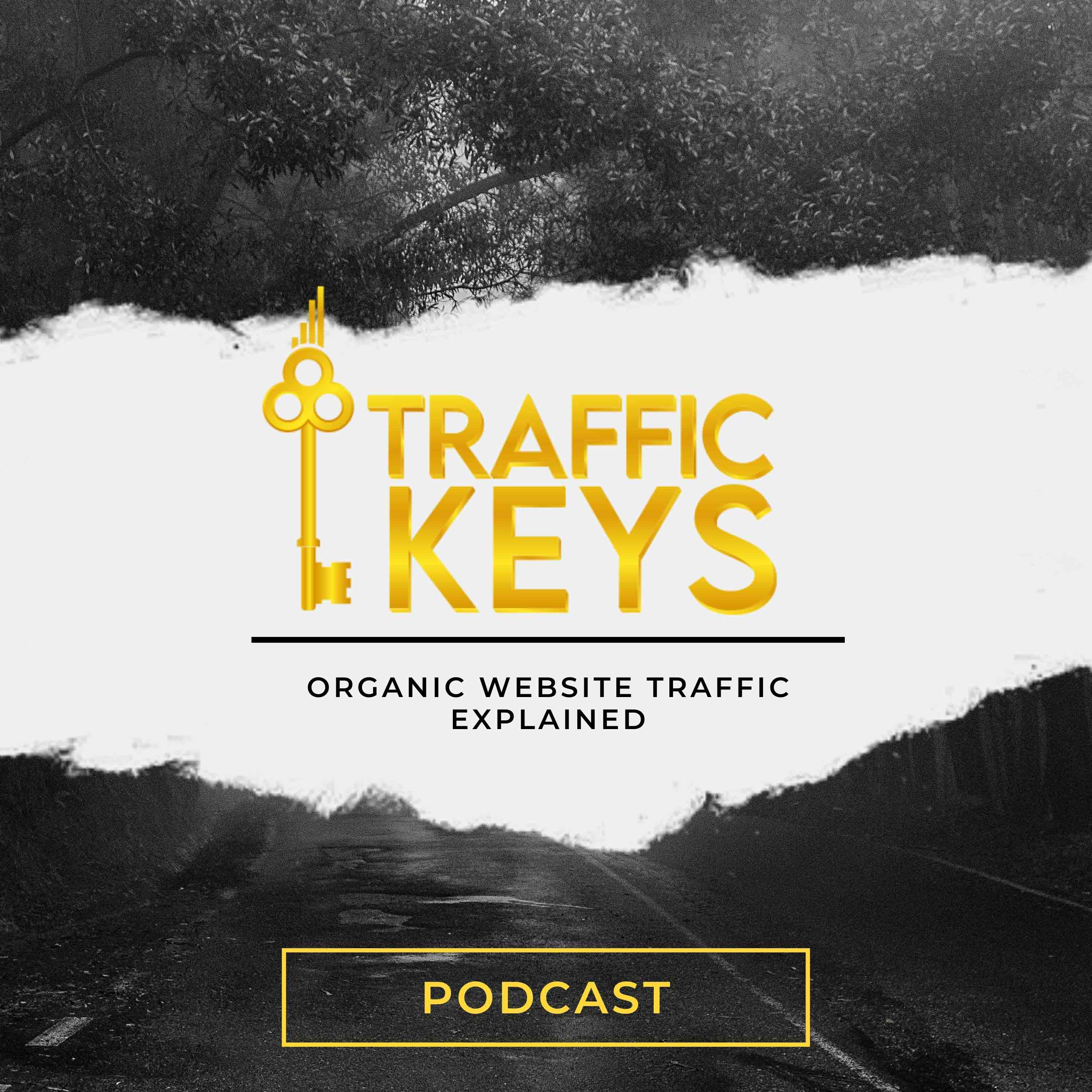
Traffic Keys Podcast
Atiba de Souza
I Have A Podcast by Vinnie Potestivo
Vinnie Potestivo
Entrepreneurs on Fire
John Lee Dumas of EOFire
Imperfect Marketing
Kendra Corman
Raise the Script with Nutrigenomics
Dr. Tamar Lawful, PharmD, APh, CNGS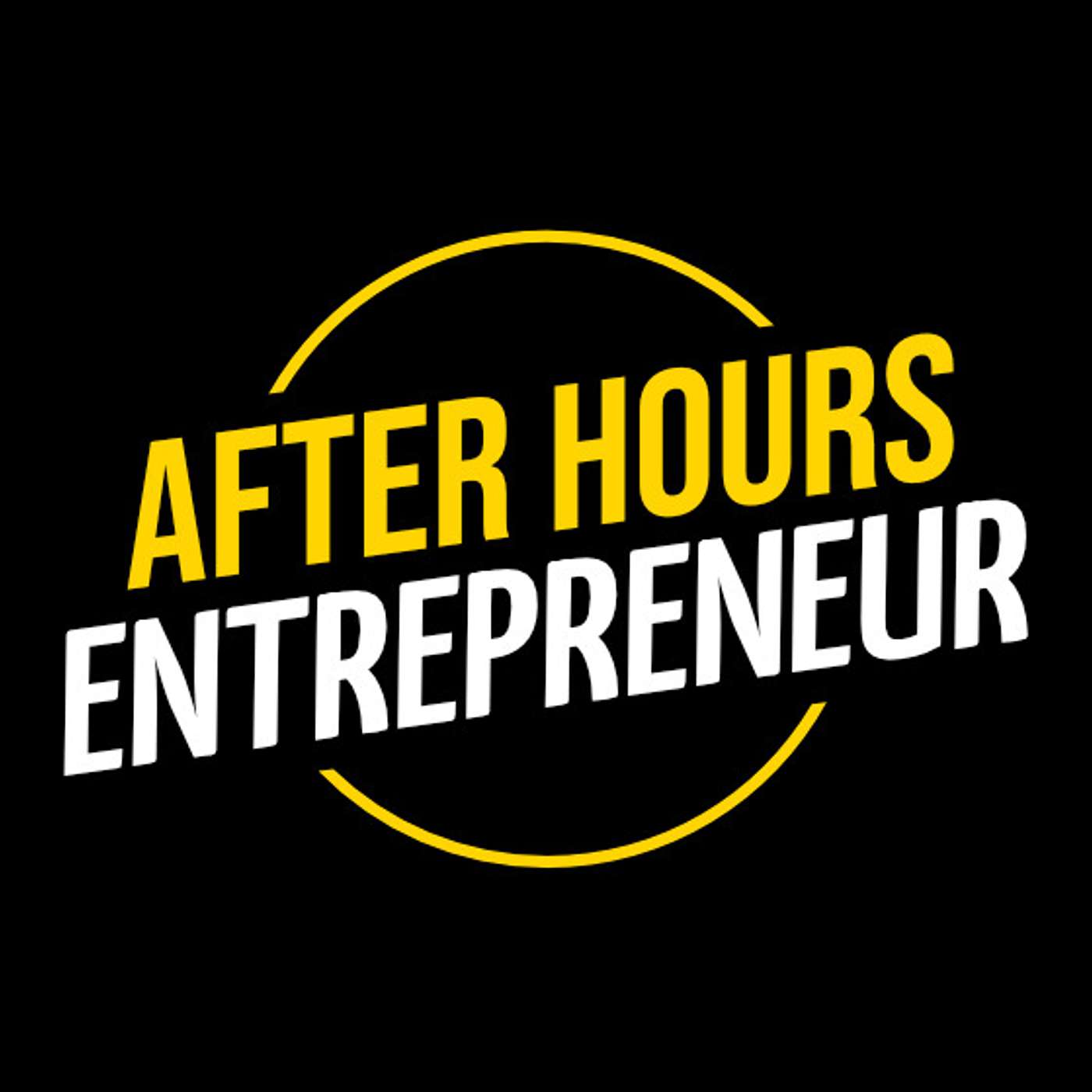
After Hours Entrepreneur with Mark Savant
Mark Savant
BETHEL
Dr. Oluwadara Alarape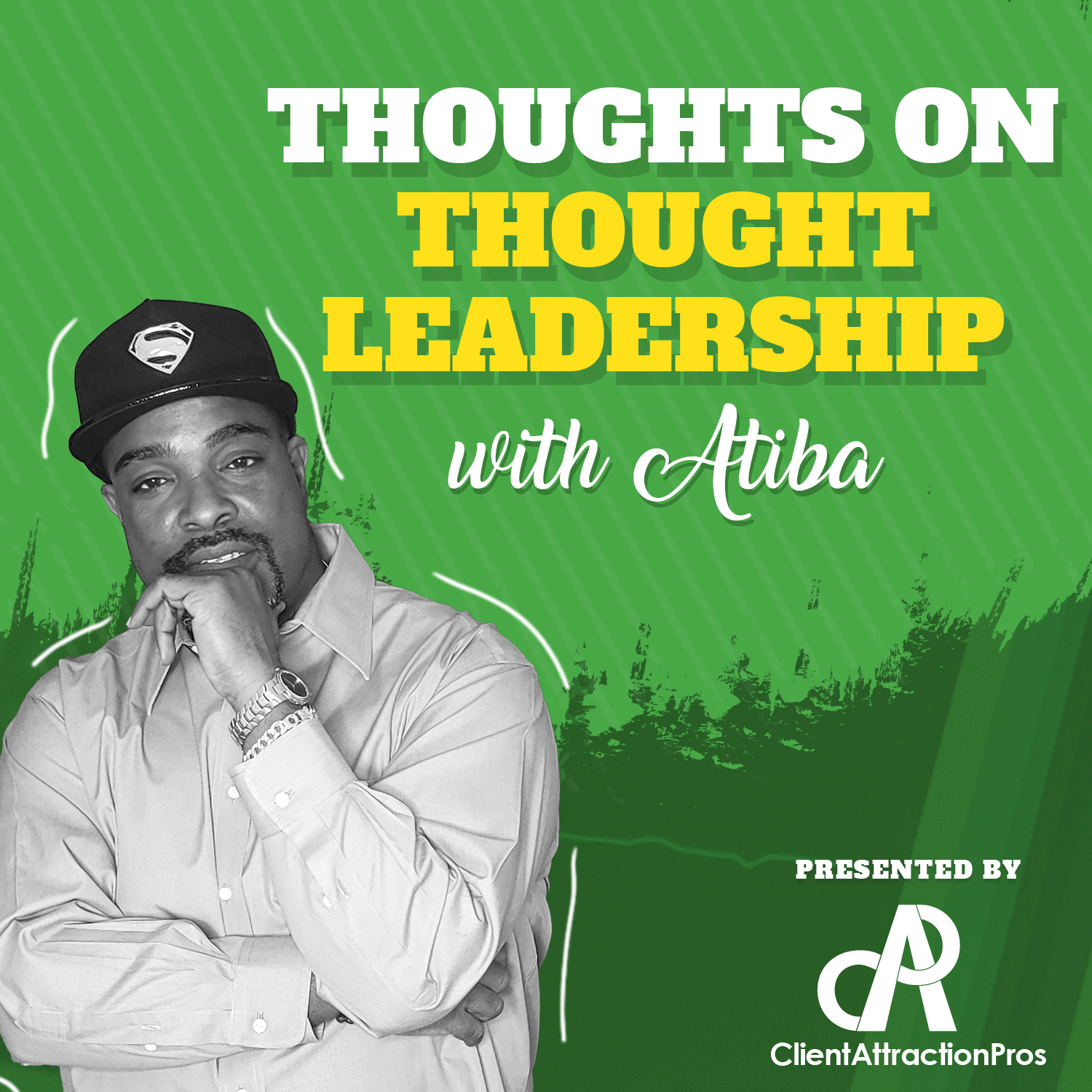
Thoughts on Thought Leadership with Atiba
Atiba de Souza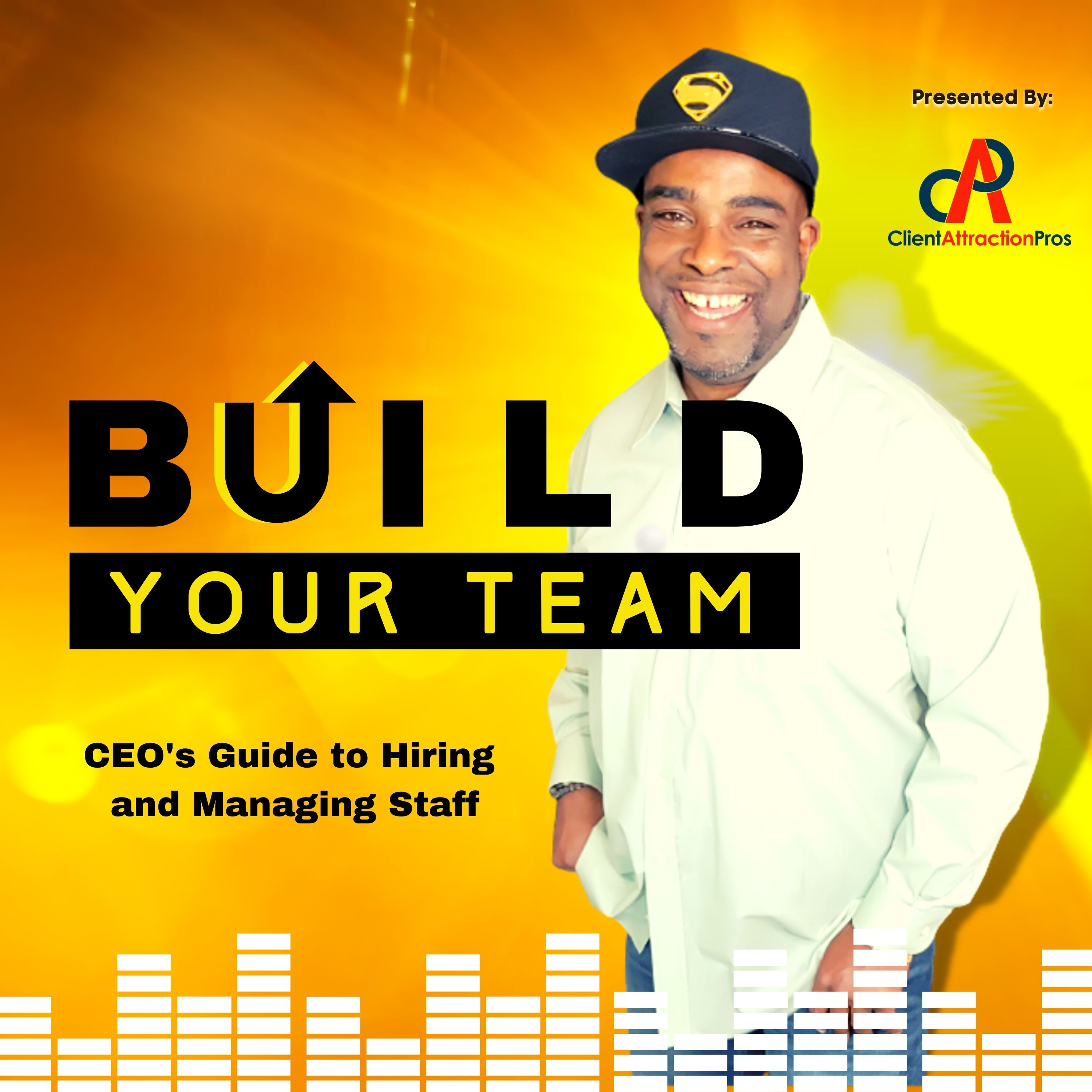
Build Your Team
Atiba de Souza
Inspirations for Your Life
John C. Morley, Serial Entreprener
Marketing in the Age of AI
Emanuel Rose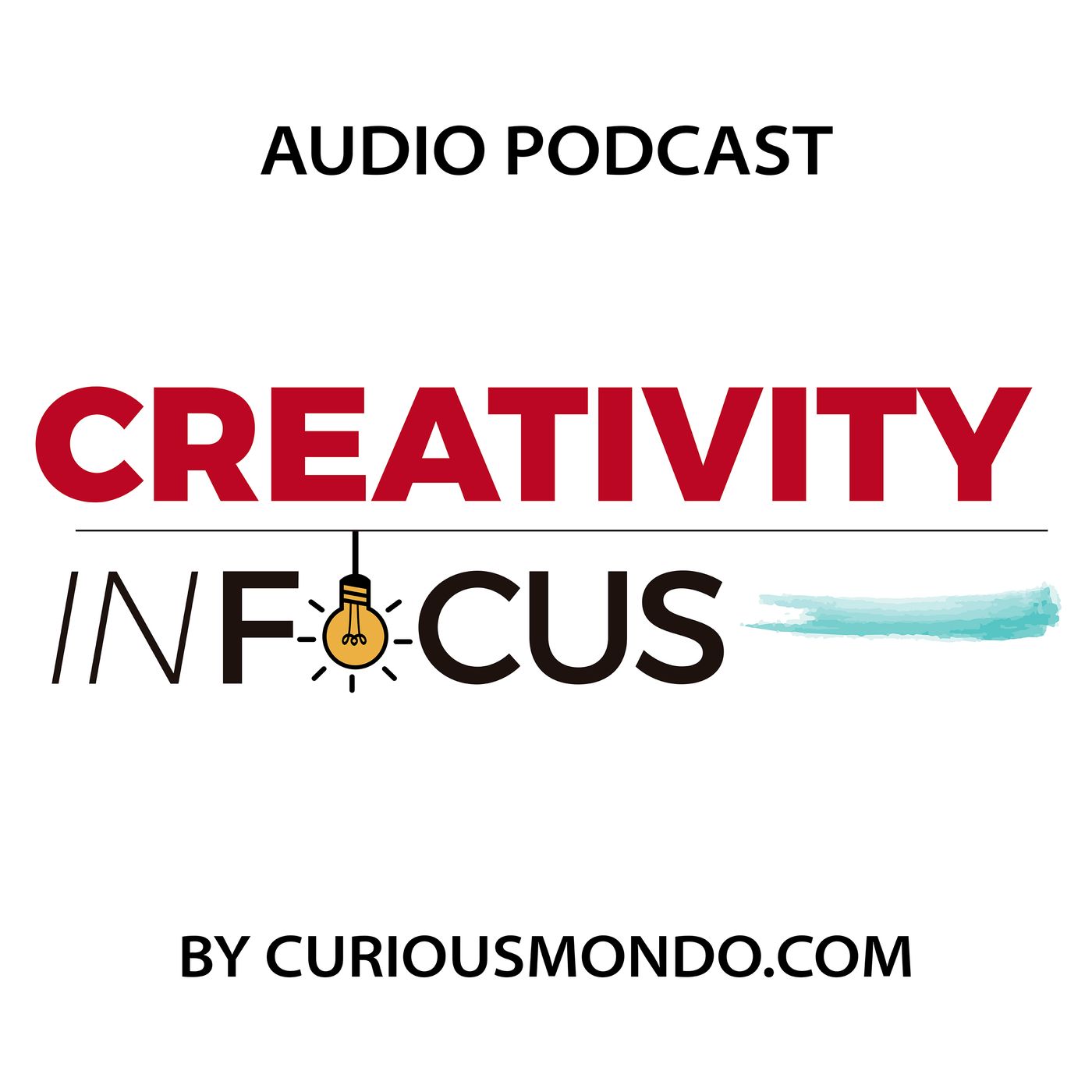
Creativity in Focus - Audio Only
Shahar Boyayan
Make Something Happen with Audrey Wiggins
Audrey Wiggins
The UnNoticed Entrepreneur
Jim James
Music 101
Daniel Lucas / G.Mick Smith
Abstract Poetry
Daniel Lucas
Food 101
Daniel Lucas/Alessandro Panattoni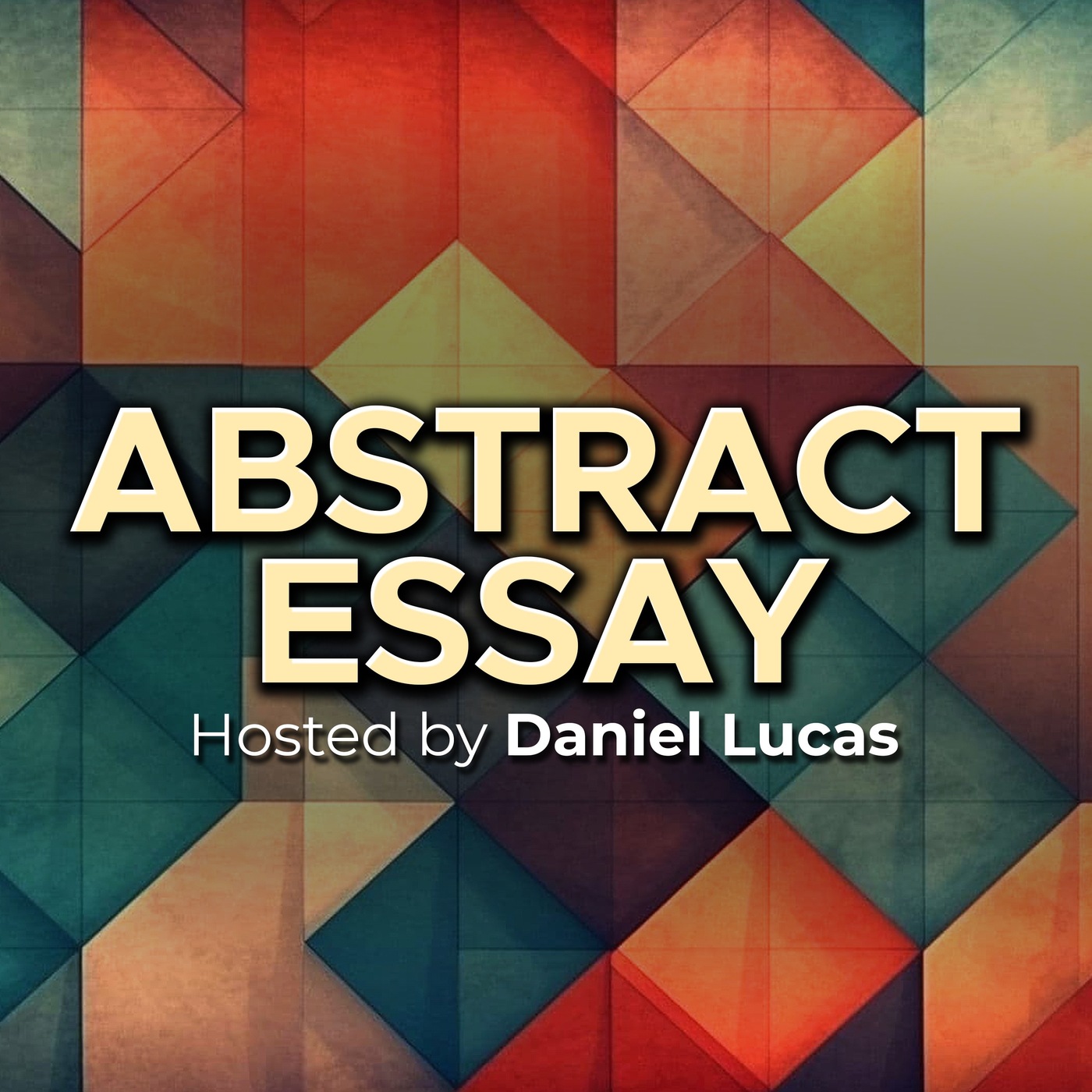
Abstract Essay
Daniel Lucas /Sal Cosenza
#iesgaherrera28d28sonidos
daniel lucas
El podcast de Lucas Daniel Porra
Lucas Daniel PorraDaily Dose of Dave Podcast
Dave Valentine
InWork Podcast with Dave Valentine
Dave Valentine
Growth Engineers
Atiba de Souza and Dean Issacs
Refuge Freedom Stories
Jonnie Taverner
St. Augustine of Hippo: Expositions of the Psalms
Mary McDonald
Podcasting for Financial Professionals
Virginia Elder

